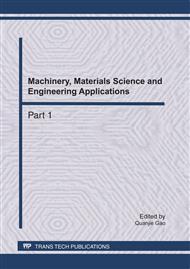p.96
p.101
p.106
p.114
p.119
p.125
p.130
p.135
p.141
Improvement of Hood Hinge Based on Protection of Pedestrian Head
Abstract:
This paper established finite element models of adult head based on GB/T 24550-2009 and hood of a car. When the finite element model of the adult headform impactor was established, tests were carried out to prove that the impactor was valid. Then experiments were carried out at adult head test area of the hood. The results show that some areas of the hood are too hard where the hood hinges are installed. It is very bad for pedestrian head to hit those areas in accident. In order to protect pedestrian head efficiently, this paper proposed a new kind of hood hinge, called buffer-type hinge. Comparison tests were carried out. The buffer-type hinge is proved to be more effective to protect pedestrian head in traffic accident.
Info:
Periodical:
Pages:
119-124
Citation:
Online since:
April 2011
Authors:
Keywords:
Price:
Сopyright:
© 2011 Trans Tech Publications Ltd. All Rights Reserved
Share:
Citation:


